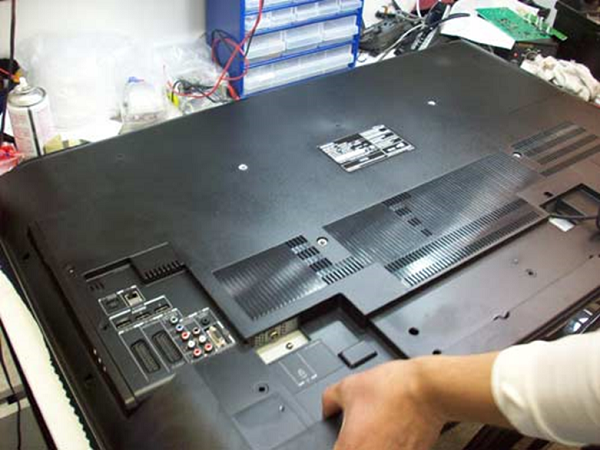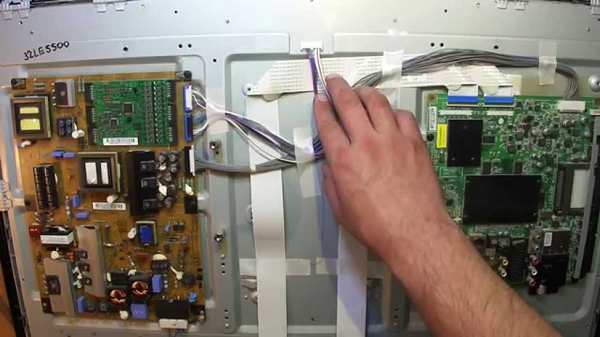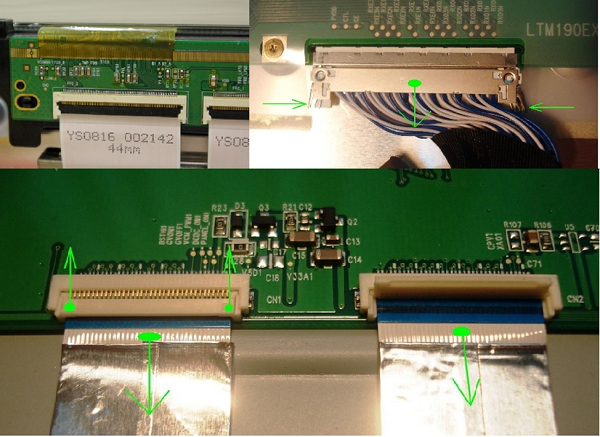LCD TV screen replacement
Owners of television sets with LCD screens sometimes face the situation when it is necessary to replace the matrix on the TV. This raises the question: is not it easier buy a new device, since the cost of replacing the LCD panel in the service centers is very high? And if you add another price to the new screen, it turns out that the repair will cost almost like a new television receiver. But in fact, not everything is so sad. Replacing the matrix of the TV - not such an overwhelming task. If you know the order of actions, then this procedure will be able to produce any home master who knows how to hold a screwdriver.
What is the LCD matrix and its faults
Before you begin to replace the matrix of the TV Samsung, LV, Philips, etc., you must have an initial idea of what is the LCD TV receiver. LCD TV set is just called the matrix. It is a glass surface with a lot (millions) of pixels, which under the influence of external signals can change the brightness and color. The image is formed from these small points - pixels. Each pixel is controlled by a special microcircuit - the driver, which is located on a flexible cable, soldered into the glass of the LCD panel itself. The TV screen is sensitive and needs special regular cleaning.
The cable to which the various elements are connected cannot be separated from the glass. Therefore, a frequent reason for replacing the screen is damage to the cable.
The most common malfunctions in LCD devices, in which the following can not be done without replacing the panel:
- screen damage due to mechanical impact (falling, impact, screen may be broken or filled with liquid);

- the failure of the microcircuits, which are responsible for the formation of the image of the liquid crystal television receiver - they can be placed on a cable soldered to the matrix on the TV;

- damage to the loop (non-removable) on which the control drivers are located;
- appearance on the screen "burnt out" strips pixels that have lost their functionality not due to mechanical effects;
- the emergence of problems with the backlight.
All the failures listed above are the reason for replacing the matrix, since the repair of the LCD matrix of the TV set is not profitable for material reasons, and often impossible (for example, when the screen is broken). An exception may be a display malfunction associated with the backlight. If the problem lies in a burnt fluorescent lamp, then its quite possible replace with newand repair the TV box in such a way it will turn out.
Difficulties may arise during the repair of the LCD TV, if the panel uses an LED (LED) backlight. Some manufacturers of LED screens leave the possibility of replacing LEDs, but there are also those that place them on unremovable plumes. In this case, replacing the matrix completely is the only correct solution.
Matrix replacement
Replacing the matrix on the Sony TV from the procedure for replacing the screen (matrix) on the LG TV differs slightly. Mainly, the difference lies in tv designsthat affects the order of its disassembly. Fastenings can be implemented in a standard way - on screws, or less convenient - on snaps, which are harder to detect and easy to break. Unit disassembly may be accessible from the front or from the rear.
Front Access
With frontal access to disassembling the device, proceed with the release of the latches that hold the panel facing.
There are models of LCD devices, including plasma, with a protective glass in front of the matrix. If the screen was broken, you will have to change the protective glass.
After the latches are unplugged, you will see the matrix of the LCD TV screwed to the body of the TV set with the screws that you need to unscrew. It should be noted that some screws may be duplicated latch. After that, unscrew all fasteners on the back of the device, covering the entire electronic filling of the device.
Back access
To replace the matrix in the TV LG, Samsung or any other, including plasma, you will need to unscrew all fasteners that hold the back panel of the unit, and remove the stand, if it is a desktop model of the device.Since in different places on the back cover screws of different lengths can be screwed in, it is necessary to remember their location.

There are designs of television receivers in which the back wall is provided special hatch (eg on LG TV) for service during the warranty period. When removing the cover, it is necessary to be careful not to damage the trains running towards it. Also, disconnect all modules that may be on the cover from the board. Screen replacement is carried out in a similar way and at the plasma TV.
Next, complete the following steps.
- When the cover is removed, you will see in front of you the metal case of the LCD TV set, on which all the electronic boards of the device and the cables connected to them are fixed. You will need to be careful in disconnecting the cables (they should not be loosened in different directions, but you need to pull, carefully, in a straight line). Disconnect them from all boards and modules of the unit. In order not to get confused how to connect them back, you can before dismantling the matrix of the LG TV, take a picture of their location.

- Also turn off all loops around the perimeter of the device.In some models they can be hidden under the frame surrounding the LCD panel. Attention: there are loops that can be pulled out only by raising the bar that is pressing them.

- Next, you need to take a new unpacked matrix, and put it next (lay something soft) with a faulty one. This is done for more convenient transfer of parts.
- The next step will be the sequential transfer of all the boards and modules from one case to another. As soon as the board is moved, immediately connect all cables from the screen to it.
- When all the modules are connected, you can install the cover and the framing frame (if there is one) in place, close the back panel, and finish assembling the LCD TV receiver, and then check the operation of the device.
In order for the TV set to work properly, it will be necessary to reconcile the new matrix with all modules. To do this, turn on the device, enter the service menu, and configure. How this is done is indicated in assembly instructions.
Replacing the screen in an LCD or LED TV is not a difficult task, but it requires utmost accuracy, since it is possible to damage not only very thin cables on the new matrix, but also itself,as it is very sensitive to kinks. Some other TV malfunctions are also possible. do it yourself.

/rating_off.png)












